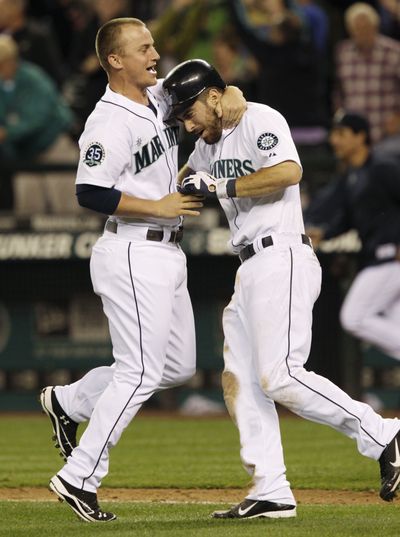Mariners solved few questions in first half of season

SEATTLE – Eric Wedge started with pure optimism, moved on to defending some of his underperformers and eventually grew increasingly angry and frustrated as his Seattle Mariners continued regressing.
Through a trying first-half of the 2012 season, the Mariners’ manager has stayed with his belief that eventually the inconsistencies will level off and Seattle’s young prospects will start playing at a major-league level.
“We’re having a lot of conversations behind the scenes, whether it be individually or with myself or other coaches and whatnot, things are being addressed that need to be addressed. That’s what I get excited about, because I’ve always said it’s easier for me then it is for (the media) or the fans,” Wedge said. “I’m privy to everything that is going on, so there is a better understanding and obviously a higher level of optimism for me than anybody, as well as I think there should be because I’m the captain of this thing.”
Seattle entered the All-Star Break last in the A.L. West, 15 games under .500, 16 1/2 games behind first-place Texas, and with increasing apathy coming from fans growing more impatient with a rebuilding plan that is only occasionally showing glimmers of hope. Ultimately, the second half of the 2012 season will be telling about whether the course Wedge and general manager Jack Zduriencik are implementing will eventually work. The first half has solved only a few questions that hung with the M’s when the season began, while numerous more have been raised.
Among the questions answered are the development of Kyle Seager as Seattle’s answer at third base going forward, Felix Hernandez’s continued stamp as one of the top aces in baseball and the impressive performance of a young bullpen that features Charlie Furbush, Lucas Luetge, Shawn Kelley and Tom Wilhelmsen.
Even John Jaso has been a pleasant surprise with his clutch hitting in late-inning situations.
But those are subtle accomplishments compared to the questions that remain. Does Seattle have a collection of No. 4 outfielders in Michael Saunders, Casper Wells, Mike Carp and Franklin Gutierrez or do they have legitimate starting prospects? Will Justin Smoak meet the potential Seattle saw when it acquired him as the centerpiece of a deal that sent Cliff Lee to Texas in 2009? Is there any depth to the pitching rotation beyond Hernandez? What has happened to Dustin Ackley?
And perhaps the biggest lingering question with the Mariners: What to do with Ichiro Suzuki, whose contract expires at the end of the season?
Couple all of those individual questions with an offense that is so inept at Safeco Field that whether the fences should be moved in during the offseason has become the most talked about topic and Seattle is a mess at the midway point.
“This is where we play. This is our home field. We’re going to play here half the season and you just have to be accepting of that. It’s a beautiful ballpark and anything that needs to be addressed will be addressed in the offseason in regard to the ballpark,” Wedge said.
Some Mariners are given a pass for their first-half efforts. Rookie catcher Jesus Montero started well at the plate in his first full major league season, but slumped significantly in June with just one RBI. Brendan Ryan’s defense at shortstop has made up for his below-average bat. Even Ackley can be excused after being moved all over the batting order. Ackley seemed to find the most comfort hitting leadoff. In 28 games at the top of the batting order, he was hitting .270 with a .344 on-base percentage. But when Ichiro was moved back into that spot, Ackley immediately began slumping and he entered the break at .233 overall with a team-high 74 strikeouts in 317 at-bats.
It’s not as if Ichiro is streaking in the leadoff spot. Ichiro is hitting more than 60 points below his career average in the leadoff spot and his on-base percentage is well below .300.
Getting the offensive problems at home figured out in the second half will be critical if the Mariners intend on getting the answers they seek about specific players heading into the 2013 season.